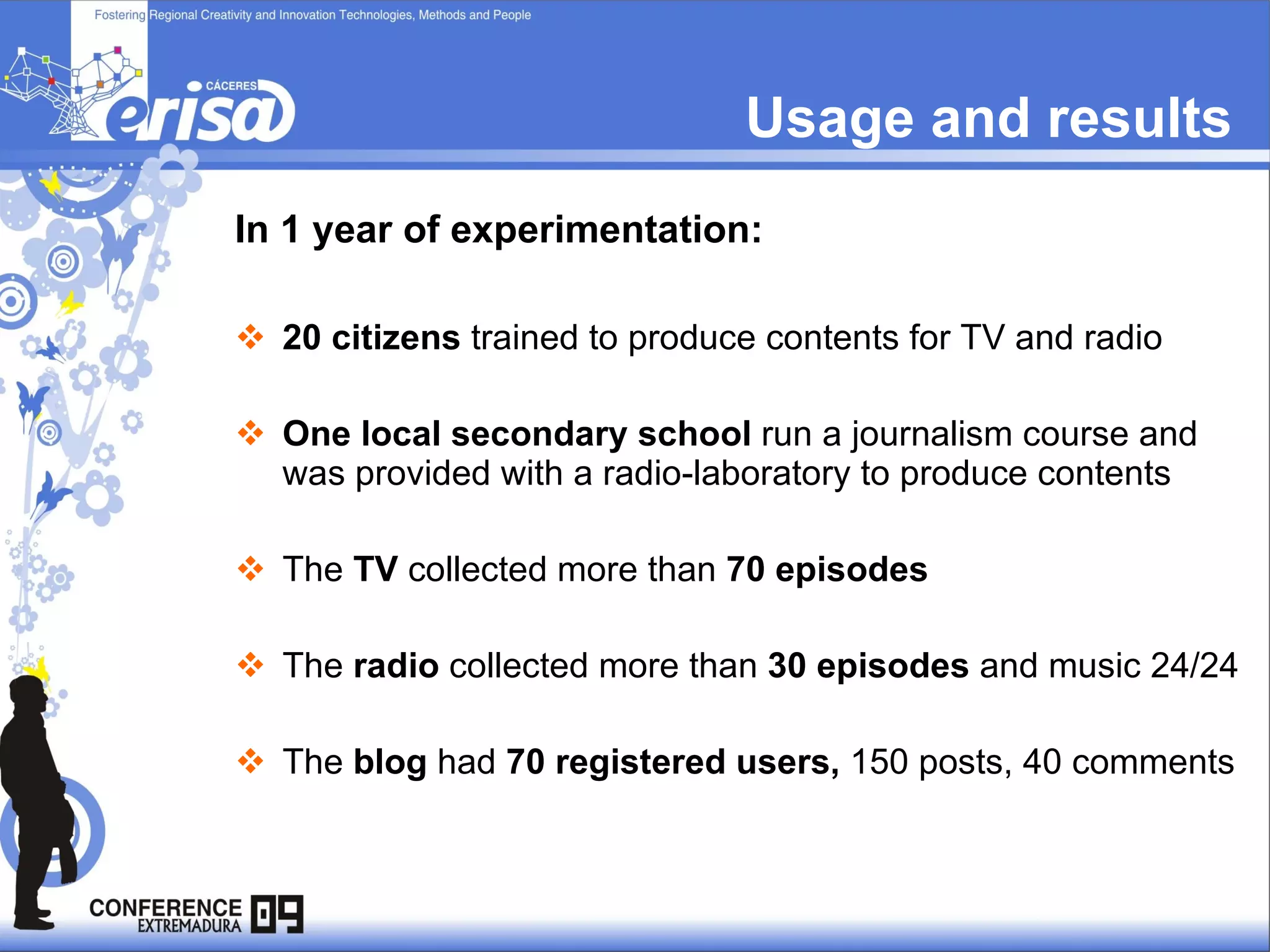The document summarizes a pilot project in the Valli Orco & Soana region of Italy that aimed to test a complete digitalization process. The project created an open wireless broadband network across 11 municipalities to provide internet and innovative services. Local stakeholders were involved in developing content for TV, radio and blogs. The network and services are now managed by a local operator to ensure sustainability.













































![Contacts Ministry for Research, Innovation, Industry and Energy P.za Castello, 165 - 10122 Torino Regione Piemonte - Bruxelles Liaison Office 62, Rue du Trône - 1050 Bruxelles THANK YOU FOR YOUR ATTENTION! [email_address]](https://image.slidesharecdn.com/caceresv1-124345086192-phpapp02/75/An-open-air-lab-46-2048.jpg)
